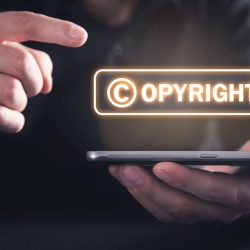In the dynamic landscape of startups, creativity fuels innovation. Often, this creative journey involves the use of existing copyrighted material. However, treading this path requires an understanding of fair use—a legal doctrine that allows the use of copyrighted material under specific circumstances. This guide delves into the concept of fair use and its application in the startup world. By providing an overview of what constitutes fair use, startups can navigate the nuanced terrain of using copyrighted content within legal boundaries, preventing copyright disputes and infringement.
Understanding Fair Use
Fair use is a legal doctrine that permits the use of copyrighted material without obtaining permission from or paying fees to the copyright owner. This doctrine is rooted in the recognition that certain uses of copyrighted material serve broader public interests, such as education, commentary, criticism, or news reporting. While fair use offers flexibility, it is not a blanket permission; rather, it involves a case-by-case analysis based on four key factors.
1. The Purpose and Character of the Use
The first factor considers how the copyrighted material is being used. Transformative uses, where the original work is modified or repurposed for a new and different purpose, are more likely to be deemed fair use. For startups, this means creatively incorporating existing material to produce something new, rather than merely reproducing the original work.
2. The Nature of the Copyrighted Work
The nature of the copyrighted work also plays a role. Fair use is more likely to be applicable to factual or non-fictional works than highly creative and fictional pieces. Startups should be cautious when using highly imaginative content and consider seeking permission or exploring alternative sources.
3. The Amount and Substantiality of the Portion Used
The third factor assesses the quantity and significance of the portion of the copyrighted work used. Using a small and non-crucial portion of the material is more likely to be considered fair use. Startups should strive to use only the necessary amount to achieve their creative goals, avoiding wholesale replication of copyrighted content.
4. The Effect of the Use on the Market Value
The potential market impact of the use is a critical factor. If the use of copyrighted material negatively affects the market value of the original work, fair use becomes less likely. Startups should be mindful of not undermining the market for the original material or creating a substitute that could harm the copyright owner’s economic interests.
Fair Use in the Startup World
For startups, fair use can be a valuable tool in the creative toolbox. Understanding the nuances of fair use allows startups to leverage existing content while staying within legal boundaries. Here are key considerations for startups exploring fair use:
1. Incorporating Commentary and Critique
Startups engaged in commentary, critique, or parody can often invoke fair use. Adding value through commentary or critique transforms the use into a new and distinct work. Whether it’s a satirical take on a popular song or a critical analysis of a visual artwork, startups can leverage fair use to contribute to public discourse.
2. Educational and Non-Commercial Use
Fair use is often more applicable in educational and non-commercial contexts. If a startup’s use of copyrighted material aligns with educational purposes or is not driven by commercial gain, it may strengthen the fair use argument. However, startups should exercise caution and seek legal advice to ensure they meet the criteria for fair use in their specific context.
3. Parody and Satire
The realm of parody and satire is fertile ground for fair use. Transforming copyrighted material to create humorous or satirical content often falls within the bounds of fair use. Startups venturing into this creative space should be mindful of the transformative nature of their work and its potential impact on the market for the original material.
4. Creative Commons and Open Source Content
Startups can explore content released under Creative Commons licenses or open-source frameworks. These licenses often come with clear permissions and guidelines for use, facilitating creative endeavors while avoiding legal entanglements. However, startups should carefully review and adhere to the specific terms of each license.
5. Seek Legal Counsel
Navigating fair use can be complex, and legal advice is invaluable. Startups should consider consulting with intellectual property attorneys to assess the viability of fair use in their specific creative endeavors. Legal professionals can provide tailored guidance based on the unique circumstances of each use and help startups mitigate the risk of copyright disputes.
Conclusion
In the vibrant ecosystem of startups, where innovation and creativity reign supreme, fair use emerges as a crucial concept. By understanding the intricacies of fair use, startups can harness the transformative power of existing copyrighted material within legal boundaries. Whether it’s incorporating commentary, engaging in parody, or exploring open-source content, startups can navigate the nuanced terrain of fair use, preventing copyright disputes and infringement. As startups continue to push the boundaries of creativity, a nuanced understanding of fair use ensures that their journey remains both innovative and legally sound.





